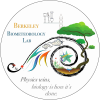Reports
Contents
| Title: | Bouldin Corn - Radiometer Calibration 2021 | |||||||||||||||||||||||||||||||||||||||||||||||||||||||||||||||||||||||||||||||||||||||||||||||||||||||||||||||||||||||||||||||||||||||||
| Date: | 2021-06-09 - 2021-06-09 | |||||||||||||||||||||||||||||||||||||||||||||||||||||||||||||||||||||||||||||||||||||||||||||||||||||||||||||||||||||||||||||||||||||||||
| Data File: | BC_calkit_20210609.csv BC_calNDVI_20210609.csv |
|||||||||||||||||||||||||||||||||||||||||||||||||||||||||||||||||||||||||||||||||||||||||||||||||||||||||||||||||||||||||||||||||||||||||
| Refers to: | BC,121038,060831,1049,1050,990181,140453,140441,140456,1051,1052,882103020,2046503357 | |||||||||||||||||||||||||||||||||||||||||||||||||||||||||||||||||||||||||||||||||||||||||||||||||||||||||||||||||||||||||||||||||||||||||
|
We installed a radiometer calibration kit at Bouldin Corn from 2021-05-27 to 2021-06-09. The calibration kit included a 4-way radiometer, a PAR sensor, and a pair of Apogee NDVI sensors that we removed from BA. See the table below for sensor serial numbers and coefficients. During the calibration period, the corn grew more than half a meter from 30 cm to 87 cm.
Radiometer cal kit on radiometer boom at Bouldin Corn. Â
Â
Â
Shortwave Incoming Figure 1. Incoming shortwave radiation.
Figure 2. Linear regression between tower and reference sensors. Fit is very tight with R2=99.9%. Â Shortwave Outgoing Figure 3. Outgoing shortwave radiation. Tower's SWout has higher peaks than the reference sensor.
Figure 4. Linear regression between tower and reference sensors. Fit is very tight with R2=99.6%. Â Longwave Incoming Figure 5. Incoming longwave radiation. It's not as synchronized as I expected given that the 2 radiometers were less than 1m away from each other.
Figure 6. Linear regression between tower and reference sensors. Fit is ok, with more scatter on the lower end (nighttime). R2=97%.  Longwave Outgoing Figure 7. Outgoing longwave radiation. Tower LWout had consistently higher peaks.
Figure 8. Linear regression between tower and reference sensors. Fit is good with R2=99.4%. Â Incoming PAR Figure 9. Incoming PAR from the reference sensor and 2 tower sensors (PARin sensor and rotating shadowband (RSB) sensor used to measure diffuse PAR). The RSB sensor has slightly lower daily peaks.
Figure 10. Linear regression between tower and reference sensors. Measurements <1mV were discarded to avoid too much weight on nighttime values. Fit is tight with both R2>99%. Â Outgoing PAR Figure 11. Outgoing PAR. The reference sensor has higher daily peaks.
Figure 12. Linear regression between tower and reference sensors. Measurements <0.2mV were discarded to avoid too much weight on nighttime values. Fit is tight with R2=99. Â NDVI Figure 13. NDVI from a pair of reference sensors (Apogee) and 2 pairs of tower sensors (one SRS pair, one Apogee pair). The SRS NDVI is obviously degraded. The Apogee NDVI values are very similar, although one may be drifting slightly. At the beginning, the 2 Apogee sensors had a 0.2 difference, but by the end the 2 Apogee sensors had a 0.3 difference. Super small difference, though.
Figure 14. Linear regression between tower and reference sensors. For a better correction for the SRS NDVI sensors, see the RT report devoted to NDVI. https://nature.berkeley.edu/biometlab/bmetdata/rtreport.php?screen=view&id=51 Figure 15. Red reflectance. The SRS sensor is obviously bad, and there is a very small difference between the 2 pairs of Apogee sensors. Figure 16. NIR reflectance. The 2 pairs of Apogee sensors match each other almost exactly. |
||||||||||||||||||||||||||||||||||||||||||||||||||||||||||||||||||||||||||||||||||||||||||||||||||||||||||||||||||||||||||||||||||||||||||
| |


